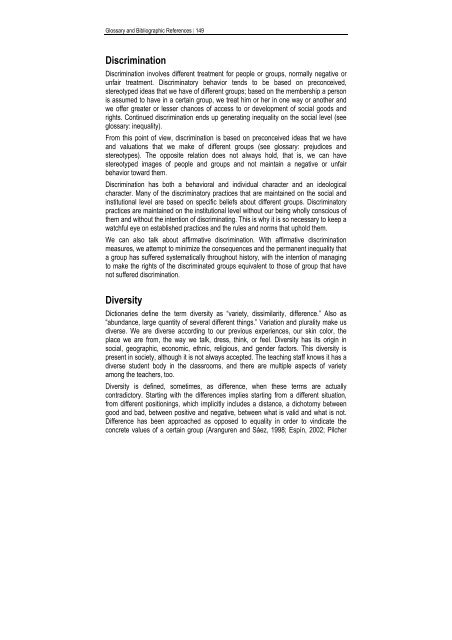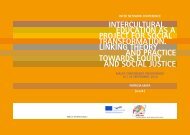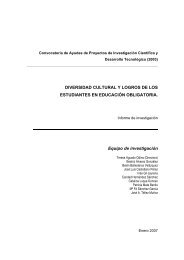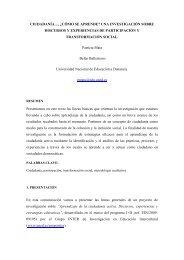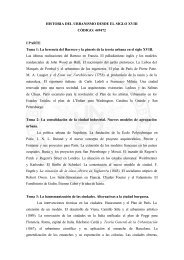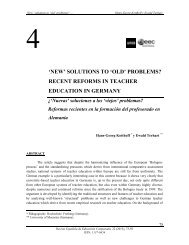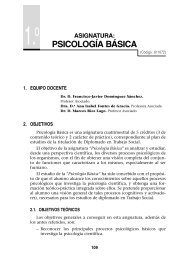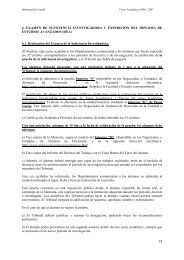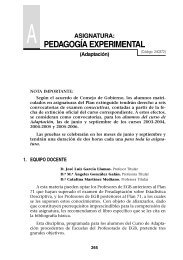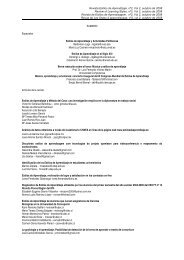Racism: What It Is and How to Deal with It - Uned
Racism: What It Is and How to Deal with It - Uned
Racism: What It Is and How to Deal with It - Uned
You also want an ePaper? Increase the reach of your titles
YUMPU automatically turns print PDFs into web optimized ePapers that Google loves.
Glossary <strong>and</strong> Bibliographic References | 149<br />
Discrimination<br />
Discrimination involves different treatment for people or groups, normally negative or<br />
unfair treatment. Discrimina<strong>to</strong>ry behavior tends <strong>to</strong> be based on preconceived,<br />
stereotyped ideas that we have of different groups; based on the membership a person<br />
is assumed <strong>to</strong> have in a certain group, we treat him or her in one way or another <strong>and</strong><br />
we offer greater or lesser chances of access <strong>to</strong> or development of social goods <strong>and</strong><br />
rights. Continued discrimination ends up generating inequality on the social level (see<br />
glossary: inequality).<br />
From this point of view, discrimination is based on preconceived ideas that we have<br />
<strong>and</strong> valuations that we make of different groups (see glossary: prejudices <strong>and</strong><br />
stereotypes). The opposite relation does not always hold, that is, we can have<br />
stereotyped images of people <strong>and</strong> groups <strong>and</strong> not maintain a negative or unfair<br />
behavior <strong>to</strong>ward them.<br />
Discrimination has both a behavioral <strong>and</strong> individual character <strong>and</strong> an ideological<br />
character. Many of the discrimina<strong>to</strong>ry practices that are maintained on the social <strong>and</strong><br />
institutional level are based on specific beliefs about different groups. Discrimina<strong>to</strong>ry<br />
practices are maintained on the institutional level <strong>with</strong>out our being wholly conscious of<br />
them <strong>and</strong> <strong>with</strong>out the intention of discriminating. This is why it is so necessary <strong>to</strong> keep a<br />
watchful eye on established practices <strong>and</strong> the rules <strong>and</strong> norms that uphold them.<br />
We can also talk about affirmative discrimination. With affirmative discrimination<br />
measures, we attempt <strong>to</strong> minimize the consequences <strong>and</strong> the permanent inequality that<br />
a group has suffered systematically throughout his<strong>to</strong>ry, <strong>with</strong> the intention of managing<br />
<strong>to</strong> make the rights of the discriminated groups equivalent <strong>to</strong> those of group that have<br />
not suffered discrimination.<br />
Diversity<br />
Dictionaries define the term diversity as “variety, dissimilarity, difference.” Also as<br />
“abundance, large quantity of several different things.” Variation <strong>and</strong> plurality make us<br />
diverse. We are diverse according <strong>to</strong> our previous experiences, our skin color, the<br />
place we are from, the way we talk, dress, think, or feel. Diversity has its origin in<br />
social, geographic, economic, ethnic, religious, <strong>and</strong> gender fac<strong>to</strong>rs. This diversity is<br />
present in society, although it is not always accepted. The teaching staff knows it has a<br />
diverse student body in the classrooms, <strong>and</strong> there are multiple aspects of variety<br />
among the teachers, <strong>to</strong>o.<br />
Diversity is defined, sometimes, as difference, when these terms are actually<br />
contradic<strong>to</strong>ry. Starting <strong>with</strong> the differences implies starting from a different situation,<br />
from different positionings, which implicitly includes a distance, a dicho<strong>to</strong>my between<br />
good <strong>and</strong> bad, between positive <strong>and</strong> negative, between what is valid <strong>and</strong> what is not.<br />
Difference has been approached as opposed <strong>to</strong> equality in order <strong>to</strong> vindicate the<br />
concrete values of a certain group (Aranguren <strong>and</strong> Sáez, 1998; Espín, 2002; Pilcher


